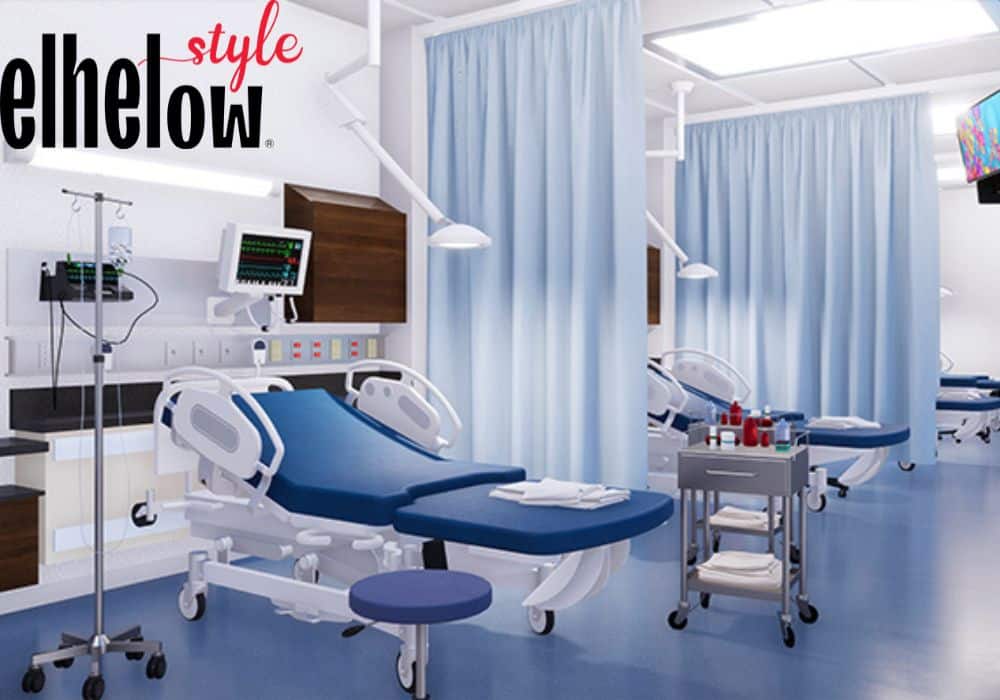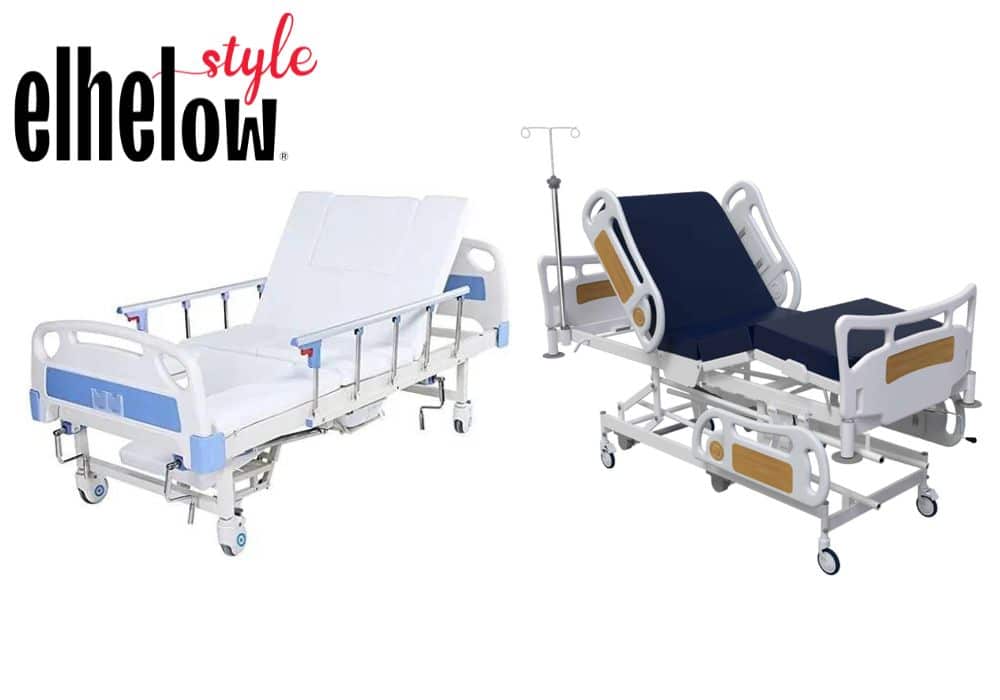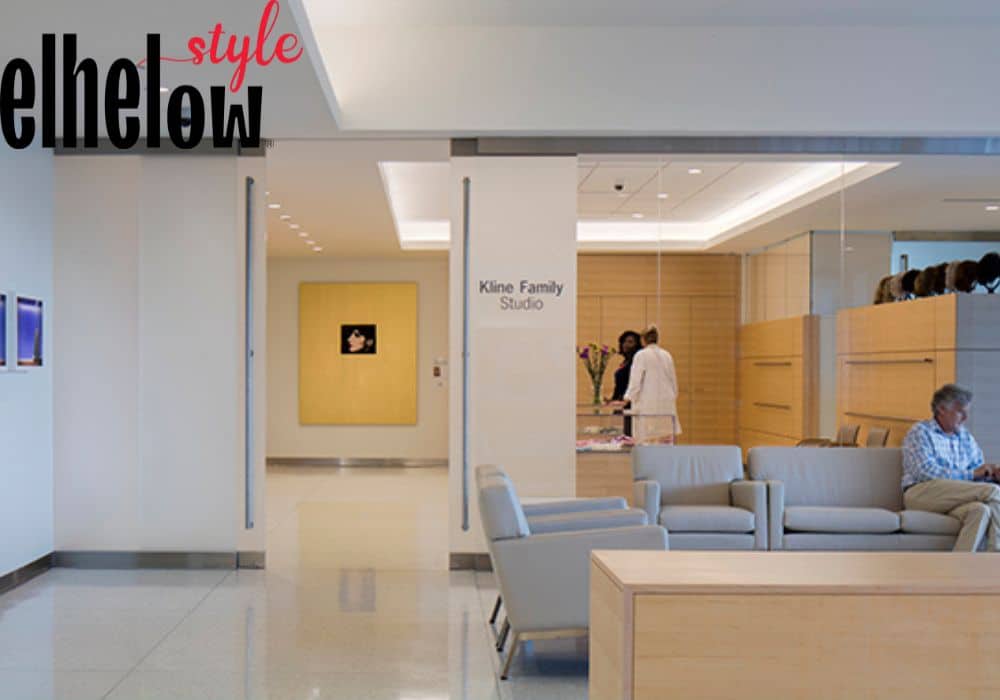Medical Furniture and Healthcare Facility Furnishing play a pivotal role in the healthcare industry. Beyond aesthetics, they contribute to patient comfort, facilitate efficient healthcare delivery, and meet rigorous hygiene standards. Choosing high-quality, durable, and ergonomically designed furniture enhances both patient care and staff performance, making them key elements in any healthcare setting.
Role of Hospital Furniture in Patient Care
Hospital furniture serves as more than just useful objects in healthcare settings. They have a considerable impact on the overall patient care experience, affecting both the well-being of patients and the efficiency of medical staff. The following points highlight how furniture plays a role in various facets of patient care in a hospital.
Comfort vs. Functionality in Furniture
Regarding hospital furniture, striking a balance between comfort and functionality is essential. Beds, chairs, and tables must be ergonomically designed to comfort patients who may be in pain or unable to move freely. At the same time, these pieces of furniture need to be functional. For example, hospital beds often have features like adjustable heights and built-in side tables, serving multiple purposes while providing comfort. Furnishings should meet patients’ needs while facilitating healthcare providers’ work.
Durability of Hospital Furniture
Hospital furniture must be exceptionally durable, given the high traffic and round-the-clock usage in healthcare settings. Materials must be sturdy, and the construction needs to be robust to withstand constant use. The furniture often has to support more weight than typical residential furniture and withstand rigorous cleaning protocols. Durability is not just a matter of long-term economics; it also affects patient safety. Weak or faulty furniture could lead to accidents, making durability a critical factor in furniture selection.
Hospital Furniture for Special Needs
Hospitals cater to diverse patients, including those with special needs who may require specialized furniture. For instance, bariatric beds are designed for obese patients and pediatric furniture is made with child safety in mind. Some hospital rooms are equipped with furniture that accommodates caregivers who stay overnight. Providing specialized furniture can significantly improve patient comfort and safety, contributing to overall better patient care.
Infection Control and Furniture
Infection control is a major concern in hospitals, and furniture can either aid or hinder these efforts. Hospital furniture should be designed with surfaces that are easy to disinfect and are resistant to microbial growth. Removable and washable covers, seamless designs that prevent the hiding of contaminants, and materials that can withstand harsh cleaning agents are important features. Furniture plays a crucial role in a hospital’s broader infection control protocol.
Hospital furniture is a key element in providing high-quality patient care. It must be comfortable yet functional, durable, tailored for special needs, and designed to control infection. By carefully selecting and maintaining furniture, hospitals can significantly improve both patient experiences and outcomes.
Design and Furnishings for Medical Clinics
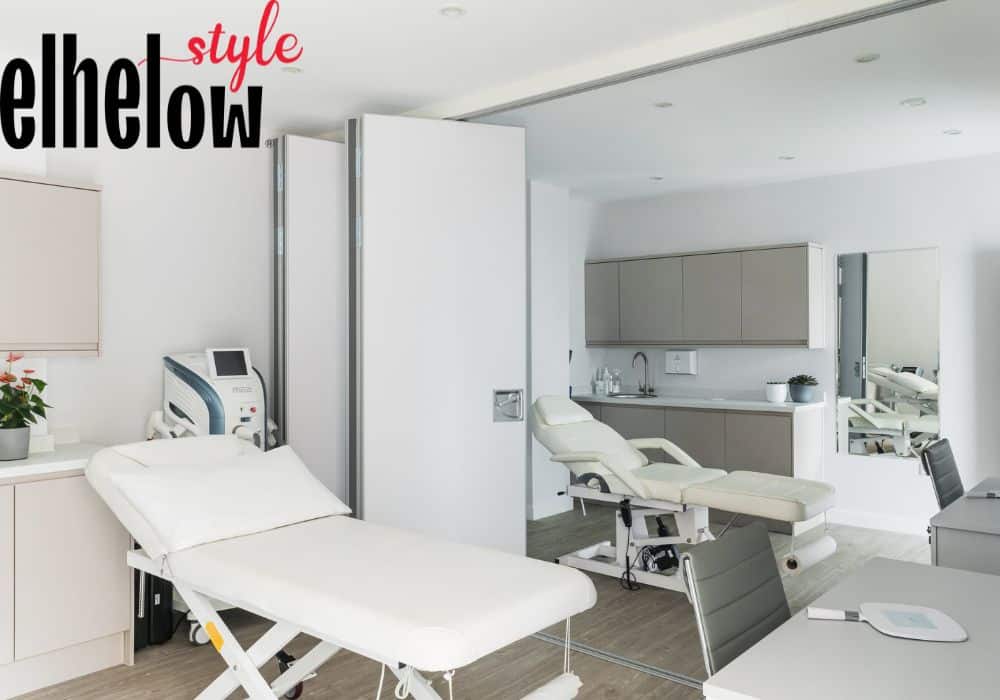
The design and furnishings of a medical clinic significantly impact the workflow for healthcare providers and the patient experience. Compared to hospitals with more ample space and specialized rooms, clinics often have to make do with limited space and resources. The following points delve into how design and furniture influence medical clinics’ overall functionality and quality of patient care.
Furnishing for Limited Space Clinics
Space is often at a premium in clinics, especially in urban settings. Furnishings should be chosen with space efficiency in mind. Wall-mounted cabinets, foldable chairs, and stackable storage units can maximize available space. The layout should be designed for easy movement of both patients and staff. For example, the reception desk should be strategically located to manage patient flow effectively. At the same time, examination rooms should be furnished in a way that makes the best use of available space.
Importance of Multi-Functional Furniture
Multi-functional furniture can be a boon for clinics operating with limited space or resources. For instance, a single adjustable exam table could serve multiple purposes, from patient examinations to minor procedures, thus eliminating the need for various specialized tables. Seating with built-in storage or tables with retractable extensions are other examples. These furniture pieces save space and can be cost-effective in the long run.
Design for Patient Privacy and Comfort
Privacy and comfort are crucial in any healthcare setting, and the design and furnishings should reflect that. Partitions or privacy screens can provide patients with a sense of security during examinations. Comfortable seating in waiting areas, pleasant lighting, and aesthetic decor can also enhance the patient experience. Choosing colors, textures, and materials can go a long way in creating a comfortable and calming environment.
Budget-Friendly Clinic Furnishings
While getting caught up in state-of-the-art furnishings is easy, budget constraints are a reality for many clinics. However, being budget-friendly can mean something other than compromising on quality or functionality. Many suppliers offer durable, functional, and aesthetically pleasing options at lower prices. Buying furniture in bulk or taking advantage of seasonal sales can further reduce costs. The key is to plan carefully and prioritize pieces that will offer the most utility and comfort.
The design and furnishings of a medical clinic play a vital role in the functionality of the space and the quality of care provided. By making thoughtful choices in furniture and layout, even clinics with limited space can offer a superior patient experience.
Key Aspects of Healthcare Facility Design and Furnishing in Egypt
A healthcare center’s design and furnishing are pivotal elements beyond mere aesthetics. They affect everything from the functionality and efficiency of medical staff to the comfort and safety of patients. Here, we explore the key aspects that healthcare providers should consider when planning the design and furnishing of their facilities.
Balancing Aesthetics and Functionality
In healthcare center design, there’s often a tension between aesthetics and functionality. While a visually appealing environment can uplift the spirits of patients and staff alike, functionality cannot be compromised. For instance, wall colors may be chosen for their calming effect, but the paint must also be easy to clean and maintain. Similarly, furniture should not just be visually pleasing but also ergonomically designed. It’s crucial to strike a balance to create a healthcare center that is both beautiful and practical.
Importance of Floor Plans and Space
An efficient floor plan is a cornerstone of any well-designed healthcare facility. Space planning affects everything from patient flow to accessibility of emergency services. Careful planning can minimize distances between frequently used areas, thus saving time for medical staff and reducing fatigue. The layout should also account for easy navigation for patients and visitors. Signage should be clear, and pathways should be straightforward to help people get to their destinations without confusion.
Materials Used in Healthcare Centers
Choosing the right materials for construction and furnishing is vital for the healthcare center’s longevity, maintenance, and safety. Materials must be durable and easy to clean. They should meet the regulations for healthcare facilities. For example, antimicrobial finishes on countertops and furniture can prevent infection. Flooring should not only be durable but also slip-resistant to prevent accidents. The choice of material also extends to furniture; for instance, hypoallergenic fabrics can be beneficial in a healthcare setting.
Design for Patient Accessibility
Accessibility is a fundamental concern in healthcare center design. Facilities should be designed to be accessible to everyone, including those with limited mobility or other disabilities. This includes wide corridors to accommodate wheelchairs, ramps where necessary, and accessible restrooms. Furniture should also be chosen with accessibility in mind. Adjustable beds, chairs with varying heights, and other adaptive furniture pieces can make a healthcare facility more inclusive.
The design and furnishing of a healthcare center require a comprehensive approach that considers aesthetics, functionality, material selection, and accessibility. By focusing on these key aspects, healthcare providers can create an environment that promotes the well-being of the patients and the efficiency of the medical staff.
Medical Furniture in Egypt and Its Importance

When we talk about healthcare facilities, medical furniture plays a significant but often overlooked role in shaping the patient experience and enabling efficient healthcare delivery. From the waiting rooms to operating theaters, furniture types and quality can directly impact patient comfort and healthcare outcomes. This article aims to shed light on the importance of medical furniture, the various types available, material considerations, innovations, and finally, where to procure them.
Types of Medical Furniture
Medical furniture varies depending on its utility and the setting in which it is used. Common types include hospital beds, which may specialize in intensive care, surgery, or maternity. Other types include:
- Examination tables.
- Medical cabinets for storing equipment and medications.
- Chairs for patients and healthcare providers.
- Trolleys for transporting medical supplies.
Each piece serves a distinct purpose and should be chosen with its specific functionality and the comfort of both the patient and medical staff in mind.
Material Considerations in Medical Furniture
The materials used in medical furniture must adhere to stringent criteria. They must be durable for long-term use, easy to clean to maintain hygiene standards, and comfortable for patients. Stainless steel is often used for its durability and ease of sterilization, while materials like vinyl are common for upholstery because they are comfortable and easy to clean. Recently, antimicrobial materials that inhibit the growth of bacteria have also been incorporated into medical furniture.
Innovations in Medical Furniture
As healthcare evolves, so does medical furniture. Innovative features are being incorporated to improve both functionality and patient care. For example, modern hospital beds have features like electronic adjustability, built-in scales, and even air circulation systems to reduce the risk of bedsores. Smart cabinets that automatically keep track of medical supplies are another innovation. Such advancements make it easier for healthcare providers to deliver efficient, high-quality care.
Where to Buy Medical Furniture
Procuring medical furniture requires careful planning and research. It’s essential to consider the cost, quality, durability, and the manufacturer’s reputation. Many healthcare facilities prefer to buy from specialized vendors who offer a range of products specifically designed for medical settings. Nowadays, online platforms also provide a convenient alternative for researching and purchasing medical furniture, provided that they meet all healthcare regulations and standards.
Medical furniture is the backbone of any healthcare facility, ensuring that healthcare providers and patients have the tools they need for effective treatment and recovery. The right choices in types, materials, and features can significantly impact the quality of care, so procurement should be a carefully considered process.
Interior Design Solutions for Clinics
The interior design of a clinic can profoundly impact not only the patient experience but also the efficiency and morale of healthcare providers. A well-designed medical space can ease patient anxiety, improve workflow, and potentially contribute to better health outcomes. In this discussion, we’ll explore various aspects of interior design solutions for clinics, including color, space management, design styles, and the role of furniture.
Use of Colors in Medical Spaces
Colors have psychological effects that can’t be ignored, especially in healthcare settings where comfort and stress reduction are vital. Light blues and greens are often used for their calming properties. White is another commonly used color, creating a sense of cleanliness and space. While the latest design trends may influence color choices, they should primarily serve the clinic’s functional needs and the psychological comfort of its patients.
Effective Use of Clinic Space
Given that many clinics operate in limited spaces, effective use of available space is crucial. An open floor plan can provide flexibility for a clinic’s various functions. However, care should be taken to provide enough private spaces for confidential consultations and procedures. Modular furniture and multi-functional spaces can also be very useful in getting the most out of limited square footage. Space planning isn’t just about fitting everything in; it’s about creating a functional and comfortable environment for staff and patients.
Modern vs. Traditional Clinic Designs
Modern and traditional clinic design debate often centers on aesthetics versus functionality. Modern designs may offer a sleek, minimalist look with clean lines and state-of-the-art furniture. However, this may sometimes come at the expense of the perceived warmth and comfort that traditional designs can offer. Wood finishes, softer lighting, and classic furniture can give a clinic a homely feel, comforting some patients. The best design is often a blend of both, taking the functional benefits of a modern setup and the comforting aesthetics of a traditional space.
The Role of Furniture in Design
Furniture serves both functional and aesthetic roles in the interior design of clinics. Ergonomic chairs, adjustable beds, and tables can significantly impact patient comfort and staff efficiency. Moreover, the type of furniture selected can also define the space’s aesthetic tone. Sleek, minimalist furniture may lend itself to a more modern design, while plush chairs and wood finishes align more with a traditional setting. The choice of furniture should be made in the context of the overall design scheme, space availability, and the specific needs of the clinic’s medical practices.
A clinic’s interior design involves many considerations, from color schemes to furniture choices. These decisions can have a tangible impact on patient satisfaction and the effectiveness of medical services. By giving thoughtful attention to these aspects, clinics can create spaces that are functional and conducive to healing and comfort.
High-Quality Medical Furniture Products Overview
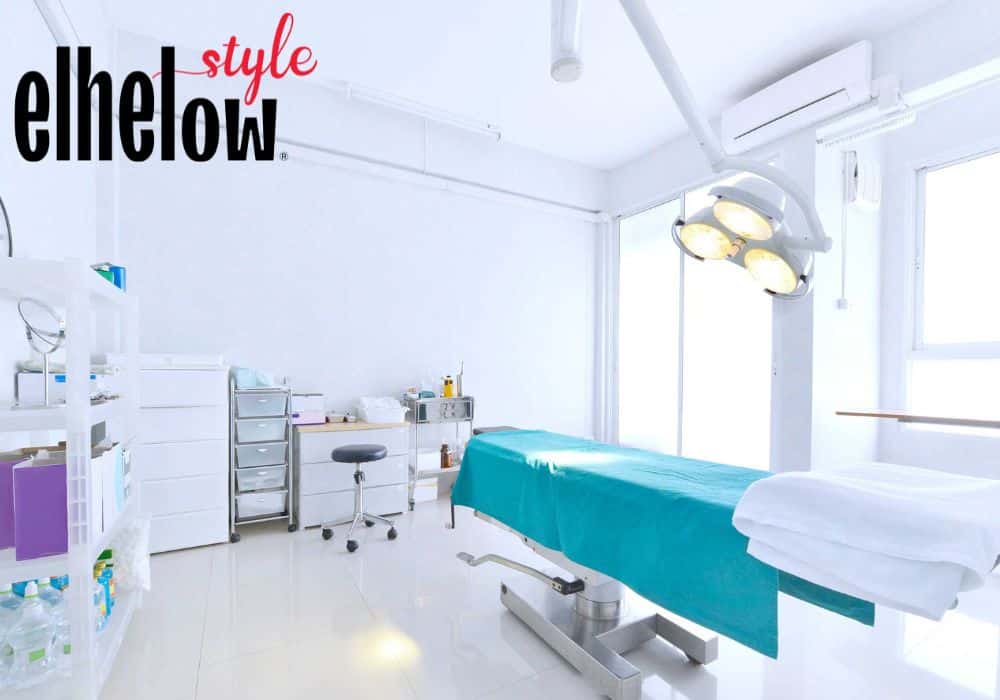
Elhelow Style stands as a testament to the importance of quality in healthcare products. From medical furniture to specialized equipment, the brand emphasizes durability, reliability, and user-friendly design. Investing in high-quality products from trusted names like Elhelow Style ensures not only the longevity of your healthcare furnishings but also contributes to a safer and more efficient healthcare environment.
Factors Defining High Quality
Quality in healthcare products is a composite of multiple factors, including durability, reliability, ease of use, and efficiency. These products often have to endure rigorous use in busy healthcare settings, which makes durability a critical factor. Reliability is another cornerstone of quality, as medical professionals must be able to trust that the equipment will perform its function without error. Ease of use affects patient comfort and healthcare staff efficiency, while efficiency in design and function can lead to better healthcare outcomes.
Elhelow Style Is Known Well for Quality
Elhelow Style has garnered a reputation for delivering top-notch quality in medical furniture and healthcare facility furnishings. Known for its durable, functional, and aesthetically pleasing designs, the brand is a go-to choice for healthcare professionals seeking reliable, long-lasting solutions for their medical settings.
The Science of Healthcare Facility Furnishing
Furnishing a healthcare facility is more than just an aesthetic endeavor; it’s a science that involves careful planning, ergonomic considerations, material choices, and an eye on the future needs of healthcare environments. Whether it’s a large hospital or a small private clinic, the furniture and equipment used can directly impact patient care and staff efficiency. This article explores the various facets of the science behind healthcare facility furnishing.
Ergonomic Considerations
Ergonomics plays a critical role in the design and selection of healthcare furniture. Items like chairs, desks, and even medical equipment must be designed to accommodate long working hours and support healthcare providers’ health and safety. Ergonomic furniture can minimize the risk of occupational injuries such as back pain or repetitive strain injuries. For patients, ergonomically designed beds and seating can improve comfort and contribute to faster recovery times.
Material Durability and Safety
Material choices are paramount when furnishing a healthcare facility. Materials must be durable for frequent use and cleaning and safe for patients and healthcare providers. Non-toxic, hypoallergenic materials are often preferred. Additionally, antimicrobial finishes can offer extra protection against bacteria and other pathogens. Durability is also key, as furniture that can withstand wear and tear will be more cost-effective in the long run.
Customized Furnishing Solutions
Every healthcare facility has unique needs based on the type of care, the space available, and the specific needs of patients and staff. Customized furnishing solutions tailor furniture and equipment to these specific requirements. This could mean adjustable beds that cater to various medical conditions or specialized storage solutions for medical supplies. Customization can also extend to aesthetic considerations, helping to create an environment that is both functional and comforting for patients.
Future of Healthcare Furnishing
As healthcare technology evolves, the furnishing needs of healthcare facilities are also rapidly changing. The rise of telemedicine, for example, requires different kinds of spaces and furniture compared to traditional consultation rooms. Future furniture solutions may incorporate smart technology, such as beds that adjust automatically to a patient’s needs or chairs that monitor vital signs. Sustainability is also becoming a priority, increasing demand for eco-friendly materials and manufacturing processes.
Furnishing a healthcare facility involves combining science, engineering, and design thinking. Ergonomic considerations and material choices lay the foundation for a safe and efficient environment. Customized solutions and an eye on future developments can help facilities stay adaptable and effective. Therefore, making well-informed healthcare furnishing decisions is crucial for immediate needs and long-term success.
Furnishing Solutions for Specialized Medical Centers
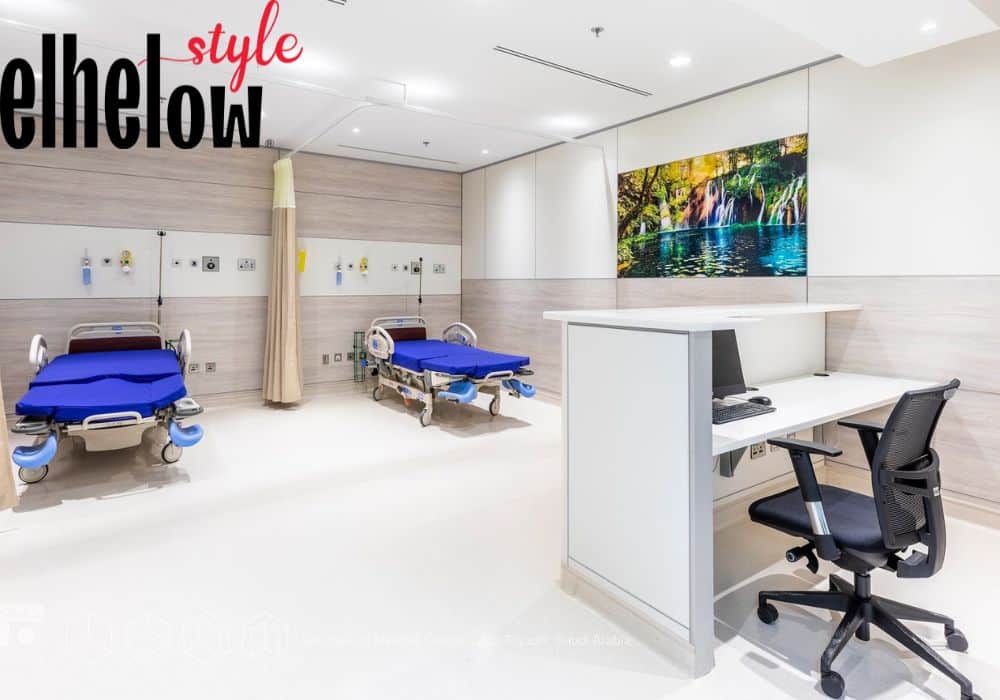
Furnishing specialized medical centers comes with its own set of unique challenges and requirements. Different furniture solutions are needed depending on the type of facility, whether it’s a pediatric center, a surgical center, a long-term care facility, or an emergency room. Here, we delve into the intricacies of selecting appropriate furniture for specialized medical settings, considering the functional and comfort aspects for patients and healthcare providers.
Furniture for Pediatric Centers
Pediatric centers require furniture that is not only functional but also child-friendly. Durability and ease of cleaning are essential given the high activity levels of children. However, colors and designs appealing to younger patients can make their experience more manageable. Furniture with rounded edges for safety, smaller sizes for comfort, and built-in storage solutions for toys and educational materials are considerations when selecting furniture for pediatric settings.
Furniture for Surgical Centers
In surgical centers, the primary focus is on sterility and ease of movement for healthcare providers. The furniture, including surgical tables, cabinets, and chairs, must be designed to be easily cleaned and sterilized. Ample storage for surgical tools, an ergonomic design for long procedures, and specialized carts for anesthesia and other essential equipment are features to look for. Materials used must be non-porous and disinfectant resistant, ensuring hygiene and durability.
Furniture for Long-term Care Facilities
Long-term care facilities, such as nursing homes or rehabilitation centers, require furniture that caters to the specific needs of an older population or those with special care needs. Comfort is paramount. Recliners, adjustable beds, and ergonomic chairs are essential. Mobility solutions like wheelchairs and walkers should easily fit into the living spaces. The furniture should also be designed to minimize injuries, with features such as padded armrests, non-slip surfaces, and easy-to-reach storage.
Furniture for Emergency Rooms
The fast-paced environment of an emergency room demands furniture that is versatile, easy to clean, and quick to move. Triage desks must be functional with quick access to computers and medical supplies. Patient chairs and beds should be easily adjustable and have minimal nooks and crannies that could harbor bacteria. Mobile carts for medical equipment, easily accessible storage units, and furniture with built-in electrical outlets for powering medical devices are other essential features.
3-Year Warranty: Elevating Medical Furnishings
In the realm of “Medical Furniture and Healthcare Facility Furnishing,” the assurance of a three-year warranty stands as a testament to Elhelow Style’s unwavering commitment to quality and customer satisfaction. This warranty reflects our confidence in the durability and reliability of our products.
It signifies our dedication to providing healthcare professionals with furnishings that not only meet but exceed industry standards. With a three-year warranty, our customers gain peace of mind, knowing that their investment in our medical furniture is protected. This warranty underscores our belief that our products are built to withstand the rigors of healthcare environments while maintaining their performance and aesthetics over an extended period. It’s a promise of trust and reliability, ensuring that our customers receive not just furniture but enduring solutions that enhance the healthcare experience for years to come.

